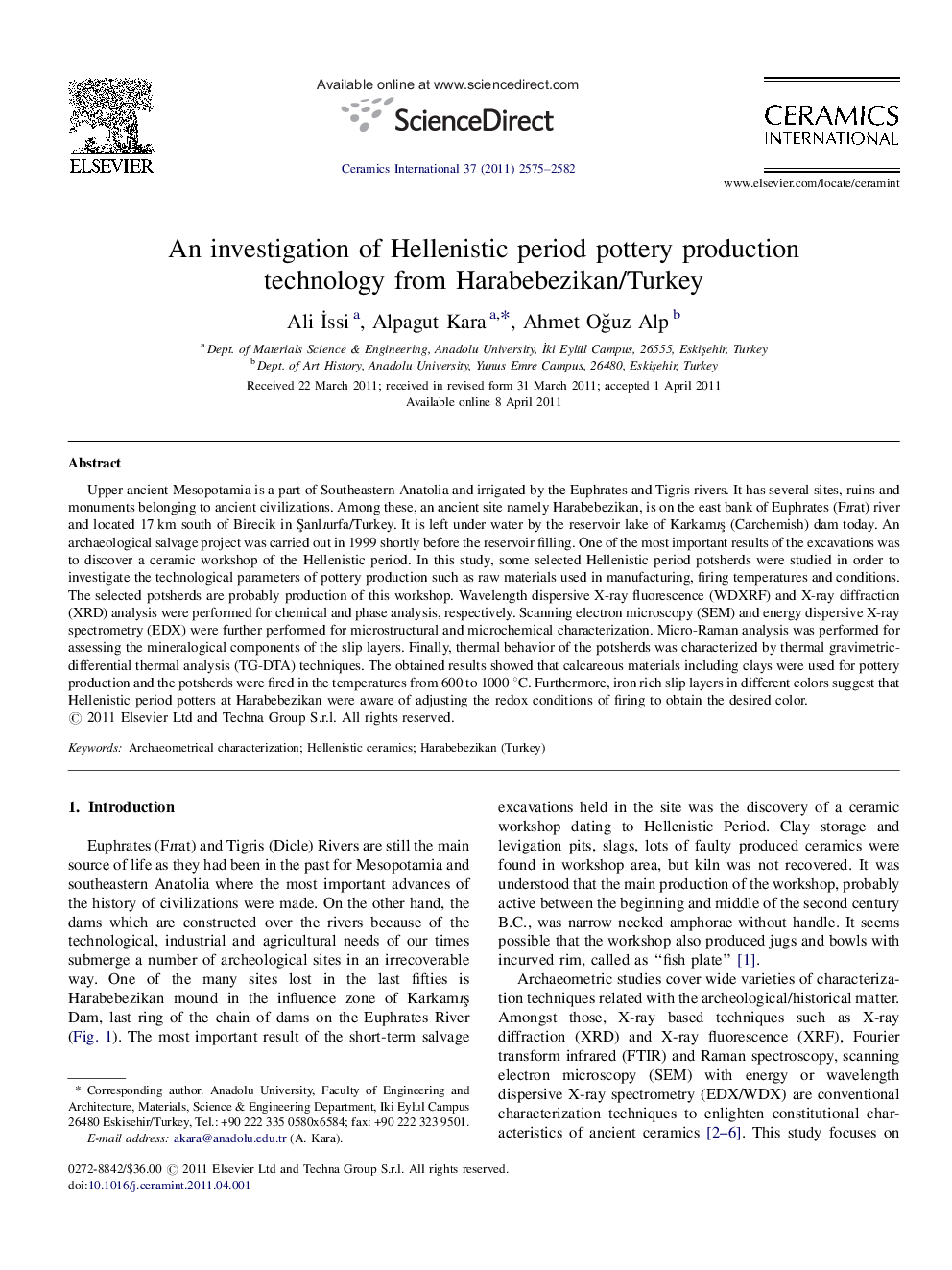| کد مقاله | کد نشریه | سال انتشار | مقاله انگلیسی | نسخه تمام متن |
|---|---|---|---|---|
| 1463243 | 989644 | 2011 | 8 صفحه PDF | دانلود رایگان |

Upper ancient Mesopotamia is a part of Southeastern Anatolia and irrigated by the Euphrates and Tigris rivers. It has several sites, ruins and monuments belonging to ancient civilizations. Among these, an ancient site namely Harabebezikan, is on the east bank of Euphrates (Fırat) river and located 17 km south of Birecik in Şanlıurfa/Turkey. It is left under water by the reservoir lake of Karkamış (Carchemish) dam today. An archaeological salvage project was carried out in 1999 shortly before the reservoir filling. One of the most important results of the excavations was to discover a ceramic workshop of the Hellenistic period. In this study, some selected Hellenistic period potsherds were studied in order to investigate the technological parameters of pottery production such as raw materials used in manufacturing, firing temperatures and conditions. The selected potsherds are probably production of this workshop. Wavelength dispersive X-ray fluorescence (WDXRF) and X-ray diffraction (XRD) analysis were performed for chemical and phase analysis, respectively. Scanning electron microscopy (SEM) and energy dispersive X-ray spectrometry (EDX) were further performed for microstructural and microchemical characterization. Micro-Raman analysis was performed for assessing the mineralogical components of the slip layers. Finally, thermal behavior of the potsherds was characterized by thermal gravimetric-differential thermal analysis (TG-DTA) techniques. The obtained results showed that calcareous materials including clays were used for pottery production and the potsherds were fired in the temperatures from 600 to 1000 °C. Furthermore, iron rich slip layers in different colors suggest that Hellenistic period potters at Harabebezikan were aware of adjusting the redox conditions of firing to obtain the desired color.
Journal: Ceramics International - Volume 37, Issue 7, September 2011, Pages 2575–2582